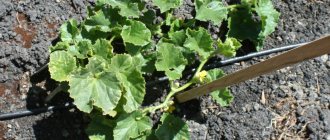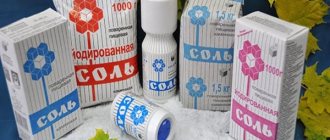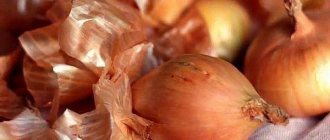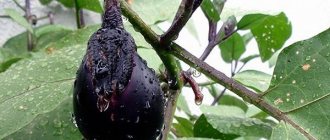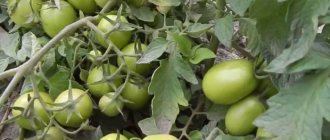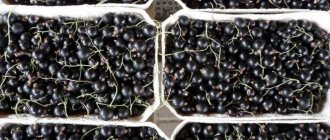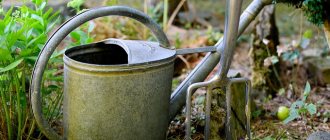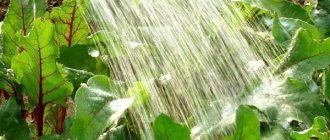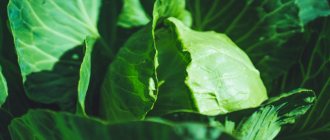Currants have long grown in forests, near rivers and streams. Because the plant is very moisture-loving. This feature must be taken into account when planting seedlings and then caring for them. Proper watering, without exaggeration, is the key to a good harvest and healthy shrubs. After all, if you pour it excessively, the roots may simply get wet and the plant will die.
By planting currants on rain-fed, that is, non-irrigated lands, you shouldn’t even count on a good harvest and tasty, sweet-sour berries. No matter how large-fruited the variety is, the berries will grow small and sour. Therefore, any summer resident needs to understand that you cannot plant currants and forget about them.
The minimum that it needs is high-quality watering carried out on time. In this article we will look at the timing and norms of currant irrigation. Let's talk about the best methods for saturating the soil with moisture.
Timing of watering in open ground
The timing of watering in open ground is different - after all, the distribution area of this crop is quite wide. So, for example, in the middle zone of the country four times will be enough, and then only when there is no rain for a long time. The watering mode is as follows:
- During the period of flowering, ovary formation;
- Before pouring berries;
- After the end of fruiting;
- Autumn soil moisture recharging.
In the southern regions, you will have to water the bushes often, at least once a week. However, the soil can tell you whether currants need irrigation. It is enough to dig a hole with the bayonet of a shovel and look at the condition of the soil. If it’s wet, you can wait, but if it doesn’t bunch up at all, but crumbles, then it’s time to saturate it with moisture.
The first watering of currants is carried out in the spring.
Spring
In spring, currants that grow in the southern regions need irrigation. Because in the coastal regions and steppe at the end of April, beginning of May, due to a rapid increase in average daily air temperatures and frequent winds, the soil very quickly loses moisture and needs to be replenished. Therefore, the bushes can be watered once a week, starting from the flowering period. When transplanting to a new place, one bucket of water per bush will be enough, but for three-year-olds and older, this norm can be doubled. Read about the green currant variety here.
To water currants, it is better to use rain or melt water collected in advance in barrels and heated under the sun.
Summer
In summer, irrigation is carried out for the first time during the berry filling period. And the second - after fruiting. They give 3-3.5 buckets per square meter. The soil is recharged by sprinkling or along shallow grooves, trying not to touch the root system, which is shallow in currants.
As soon as water is absorbed into the furrows, they are immediately closed, and the soil is loosened and mulched.
Autumn
The last watering of the year for Altai red currant, Selechenskaya, Rose and other varieties is carried out in the fall. Dry soil with little or no snow cover leads to partial or complete damage to the plant's root system. Bushes watered in autumn are distinguished by good frost resistance.
In winter, currant bushes are dormant, so they do not need watering.
Rules for caring for currants
Although currants can bear fruit in one place for up to 15 years, the optimal period is considered to be 9–10 years. After this, the bush is usually uprooted.
The next rejuvenation procedure, which should not be forgotten, is carried out every 4–5 years. During autumn pruning, all old branches are cut off at the root. Young shoots, up to 3 years old, remain.
Otherwise, the rules of currant agricultural technology are typical, and include several standard procedures for fruit bushes:
Loosening
| |
Mulching
| |
Spring and autumn feeding
| |
Trimming
| |
Diseases and pests
|
Effective watering methods
There are several methods of watering. The summer resident must choose based, for example, on his budget, time, and other factors. An important one is the presence of the same water supply on the site. After all, you can carry out drip irrigation if there are a lot of currant bushes in the area and they grow not chaotically, but in rows. Thanks to this type of irrigation, water is used very sparingly and there is no need to pull a hose under each bush to sprinkle. Or dig a hole and go back and rearrange the hose as needed. True, if there are several bushes, then you can water them this way. We will tell you how best to water black, red and white currants below in the article. Find out about the characteristics and description of the Zaporozhye Kishmish grape variety here.
Black
Summer gardeners often use the following methods of watering currants:
- Sprinkling. The hose is connected to a water supply. They pull it to the currant bushes, put a sprinkler on the end, which you can buy in a store, and turn on the water. If watering is carried out in the evening, it resembles rain, because not only the ground is irrigated, but the shoots and leaves. But in summer, in sunny weather, this method should not be used. Because drops of water on the leaves can serve as lenses and the sun's rays will damage the leaf blades. Especially the young ones.
- Drip irrigation. If there are a lot of currant bushes on the site, then it is worth carrying out drip irrigation. In this case, the currants can not only be watered, but also fertilized using special devices.
- Manual watering. When there is no running water on the site, rain or melt water is collected in containers, and then each bush is watered from a watering can or bucket. When the bushes are young, a bucket of water is enough, but three years old and older already need from 2 to 4 buckets.
This article will tell you about Dutch varieties of tomatoes.
Red and white currants are watered in the same way as black currants. If this is watering by hand, then you need to make a hole near each plant and move the hose in time. Usually watering is combined with fertilizing. In such cases, they dig grooves along the perimeter of the crown of the bush, pour out about 3 buckets of water, and as soon as it is absorbed, the grooves are covered with earth and loosened.
What to water besides water
In addition to standard moisturizing, an important stage in caring for shrubs is feeding them. For the first time, fertilizers are applied when planting a plant - humus, superphosphate, and ash are placed in the pit.
In June, when crops are actively developing, it is especially important to feed them. For this purpose, nitrogen fertilizers, manure, humus, and compost are used. Fertilizing is combined with watering - it is done before and after the introduction of nutrients.
Fertilizing scheme
If the pits were well fertilized when planting crops, fertilizing may not be necessary for the first 2 years. Regular moistening of the bushes is sufficient.
Next, fertilizers are applied in stages:
- spring (May) mineral fertilizing is required. To do this, dissolve 10 g of nitrogen, 15 g of potassium, 20 g of phosphorus fertilizers in 10 liters of water. This dosage is designed for 1 bush.
- In June, fertilizing helps the growth of shoots and the filling of fruits after flowering. The procedure is combined with watering. Mullein diluted in water in a ratio of 1:4 is introduced into the soil. Dosage – 1 bucket per 1 bush.
- After fruiting, the soil and bushes also need to be prepared for the next season. Fertilizers are introduced for digging (per 1 sq. m): organic - up to 6 g, phosphorus - 30 g, potassium - 20 g.
To prepare for winter, manure and compost are added to the soil, combined in a 1:1 ratio. This fertilizing increases the frost resistance of crops.
How to water
Illiterate watering can simply destroy the bush. Therefore, before saturating the soil with moisture, it is necessary to check its condition. To do this, you can dig a hole in the ground near the bushes and pay attention to the soil moisture:
- Dry at a depth of 5–10 cm. Do not water;
- Dry at a depth of 10 to 15 cm. Pour 2 buckets of water under the bush;
- The soil has dried up to the point of the shovel. Up to 4 buckets of water are poured under the bush.
Manual watering sequence:
- Fill the barrels with water to let it settle and warm up in the sun.
- Weed under the bushes and rake them out.
- Make grooves around the perimeter of the currant crown.
- In the evening or early in the morning, pour water into them.
- As soon as the water is absorbed, cover the holes and mulch.
It is necessary to carry out irrigation so that after it the ground is wetted by 45–60 cm.
When planting black currants in open ground, in any case, pour at least a bucket of water under the bush. Even if the soil is very wet. This material will tell you about the features of growing Golden currants.
Periods
Many gardeners perform this procedure according to the periods of growth, flowering, fruiting, and not according to the seasons. You should also pay attention to the weather. If it rains frequently, watering is not recommended, as excess moisture will cause the roots to rot.
During and after flowering
Watering is carried out during flowering. This helps prevent flowers from falling off. The fruit crop receives enough nutrition to gain strength for fruiting.
Two weeks after the end of flowering, it is recommended to irrigate the plant regularly. This will help you get a good harvest at the end of the season.
At the moment of ovary formation
Irrigation during the formation of ovaries is a mandatory procedure. It is carried out according to the rules indicated above. If you ignore this moment, the ovaries will disappear.
During ripening and filling of berries
If you water while the fruits are pouring and ripening, they will be juicy and large. This is due to the fact that the currants will receive the nutrients necessary for the berries from the water.
After fruiting
After harvesting, the fruit crop is watered so that it can restore its strength. If this is not done, the bush will get sick or wither.
What can you mix into water?
When watering, you can add microelements necessary for the plant into the water, carrying out scheduled fertilizing. For example, nitrogen, phosphorus and potassium fertilizers, slurry. Or baking soda to improve pH. After all, currants do not like acidic soil, and soda alkalizes it.
- Urea. It is better not to scatter mineral fertilizers, and synthetic urea is one of them, under bushes. First, they are dissolved in water, which is poured into the prepared grooves. The required concentration of urea is from 10 to 15 grams per 10 liters of water.
- Ammonia. To combat aphids, ammonia is used. To do this, 40 g of ammonia and liquid soap are diluted in one bucket of water and the bush is treated.
The bushes are not watered with this solution, but rather sprayed.
Is it possible to water currants during flowering?
Flowering currants do not need to be watered. An exception can be made only if the spring was early and dry. If there is a lack of moisture in the soil, flower ovaries may begin to crumble. Watering during this period should be done only by the root method, with warm water.
Some gardeners at this time only spray the bushes with honey solution (1 teaspoon of honey per 1 liter of water). This is done to attract flying insects, which are pollinators for currant flowers. Thanks to this, flower ovaries fall off less and yield increases.
Features of watering with boiling water
Some summer residents pour boiling water over currant bushes in early spring to prevent diseases and strengthen the plants' immunity. The procedure is simple. You need to prepare a watering can in advance and place it near the bush. Then boil water, add potassium permanganate crystal there so that the water turns slightly pink. Pour into a watering can. During this time, the water temperature will drop to 75–80 degrees. Then, raising the watering can 9-10 cm above the shoots, thoroughly pour over the entire bush. Read about the features of growing onions by following this link.
Symptoms of lack and excess moisture
Water is necessary for normal vegetation of almost all crops. Processes important for plant life (photosynthesis, obtaining nutrients) occur with sufficient soil moisture.
The lack of water in the soil can be easily determined even by the condition of the crown. Currant leaves turn yellow, gradually curl, wither and fall off along with the ovary ahead of time. The stems of young shoots become sluggish and stop growing. If the soil has dried out 15 cm deep, this indicates that the plant needs watering.
If the soil is excessively moistened, the crown of the berry crop turns pale, because the roots do not breathe, and the process of photosynthesis is disrupted. Without receiving nutrition from the soil, the plant withers and may die if measures are not taken in time.
In regions with sufficient precipitation, a situation where the soil completely dries out rarely occurs. Therefore, you should control the humidity level so as not to harm the bush. In the southern regions of the country, watering is carried out frequently to create comfortable conditions for the fruit crop to form a harvest.
Attention! If a handful of earth, squeezed in your hand, crumbles, this means that the soil is dry. Moderately moist soil is easy to compress, but does not clump together.
conclusions
You cannot get a good harvest if you do not provide high-quality and timely watering of currants. The number of moisture recharges directly depends on the region where the crop grows. In the southern regions this will have to be done once a week, but in the more northern regions you can limit yourself to the following periods:
- During the flowering period, the formation of the ovary.
- Before pouring berries.
- After the end of fruiting.
- Autumn soil moisture recharging.
In some cases, watering is combined with cuttings in the spring and fertilizing with mineral fertilizers, slurry, synthetic and natural urea. In order to prevent diseases and increase the protective powers of the bush, some summer residents pour boiling water over currant bushes in early spring.
Moisture retention
Properly performed hydration is not all that a crop needs. So, it is necessary to understand how to retain moisture, in particular at the currant root. This question is relevant when watering currants during the ripening period. Mulch will help solve the problem. After watering the plant, it is worth mulching the bush using any means. It can be humus, hay, sawdust, peat. A gardener or gardener always has one of the listed components on his property.
The fact is that mulch will serve as a kind of shelter, under which the soil remains loose and moist for a long period of time. In addition, air circulation will not be disrupted, which is important for the roots of the plant.
Useful tips from experienced summer residents
The experience of Russian gardeners cultivating currants dates back centuries. Therefore, experienced summer residents willingly share useful recommendations with beginners.
Not all garden plots are equipped with modern irrigation systems. To make it easier to care for the berry crop, the soil in the root zone of the shrub is freed from weeds. The moistened and loosened soil is covered with mulch. This layer (5-7 cm) may consist of mature compost, humus, coarse sand, mown grass, hay, etc.
Attention! Mulching protects the soil from weeds, erosion, overheating, cooling and drying out.
Mistakes to Avoid
Beginner gardeners sometimes make the mistake of thinking that the more moisture and fertilizer the plant receives, the better the result will be. However, excesses of both always negatively affect the health of the bush and the harvest.
If you are in doubt whether a berry crop needs watering, this can be determined in a simple way. Stick a shovel into the ground to the depth of a bayonet. If the top layer of soil has dried out by 10-15 cm, adult plants need to be watered at the rate of 40 l/sq.m. m. For young seedlings, this norm should be halved.
When using mulching, it is necessary to ensure that the protective layer is not too high and does not cake. In addition, it cannot be laid out in close proximity to plant trunks. Close contact with mulch can cause the development of diseases.
